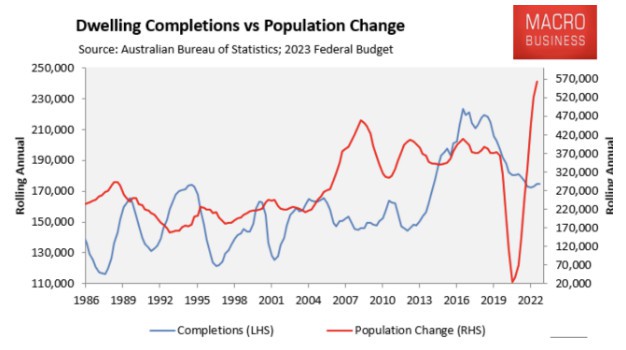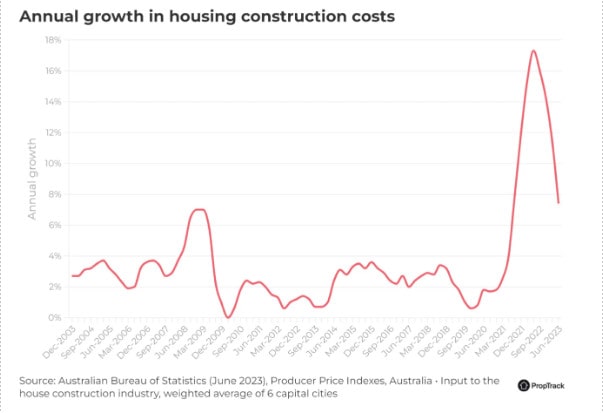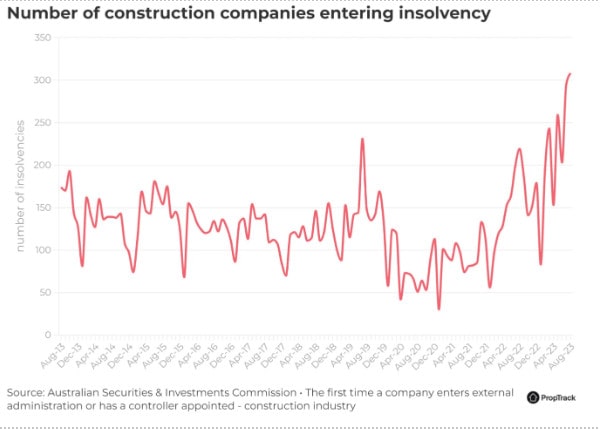- The first step is making the call.
- 1300 022 482
- hello@searchpartyproperty.com.au
Why 2024 Will Be a Big Year for Property Investors

As we edge ever closer to the new year, Australian property just might be shaping up for an impressive surge in late 2024. To understand why 2024 will be such an important year for property, read on:
Demographic Drive
It’s been shaping the property narrative for some months now, and Australia’s burgeoning population will remain the cornerstone of the property’s price ascension. The Demography group, Informed Decision, estimates that by 2041, Australia’s population will burgeon by 7.4 million, mandating the construction of two million additional homes. This propels the annual population growth to 410,000 individuals for the next 18 years, a substantial leap from the 318,000 average annual growth noted this century. The past saw Australia taking 23 years to achieve a 7.4 million population growth; however, the same milestone is now expected to be reached in a mere 18 years. The lion’s share of this growth is earmarked for Sydney, Melbourne, Brisbane, and Perth, which are forecasted to accommodate an additional 4.6 million individuals.

Construction Conundrum
Anne Flaherty, an economist at PropTrack, has expressed concerns over the feasibility of housing Australia’s soaring population. A plethora of challenges beleaguer the construction sector. The costs associated with constructing new homes have skyrocketed, marking the fastest rate of increase since the 1970s. This fiscal escalation has exacerbated the plight of builders, with a staggering 2,213 construction firms declaring insolvency last financial year, a 72% upsurge from the preceding 12 months. Moreover, the appetite for purchasing new properties has diminished, with a notable decline in the percentage of individuals feeling confident about buying off-the-plan or newly built properties. The government’s goal of delivering 1.2 million new homes within five years (translating to 240,000 dwellings per annum) is at best, ambitious, at worst, fanciful. This is especially evident given that the historical peak stands at just 224,000 dwellings over a year, ending March 2017.


Supply-Demand Disparity
The significant mismatch between housing supply and demand is set to intensify. This year’s market witnessed a decline in dwelling approvals to the lowest in over a decade, an ominous sign amidst booming population growth. The already critical housing shortage is predicted to worsen unless substantial measures are undertaken swiftly. Australia’s housing crisis is compounded by nearly two decades of elevated immigration levels. With projections indicating robust immigration, and no sign of a change in immigration policy, the strain on housing and infrastructure is set to escalate.
Market Momentum
Notwithstanding the challenges, the property market exhibits robust momentum. The current market rebound represents the first time in 30 years that house prices have risen despite a rate hike cycle. The National Australia Bank (NAB) has revised its property price forecasts upward for 2023 and 2024, attributing this to a “significant supply-demand imbalance”. Despite anticipated hikes in interest rates, property prices are expected to climb 8% this year, and a further 5% in 2024, aggregating to a 13% growth over two years – according to revised NAB forecasting. The capital cities are anticipated to witness disparate growth rates, with Brisbane prices expected to surge almost 19% over the two years. This upward trajectory again being supported by population growth, rent growth, and favourable labour market conditions.
The anticipatory rise in property prices isn’t confined to just 2024. Projections by KPMG suggest a 15% rise in house prices by mid-2025, with apartment prices jumping over 9%. Such forecasts, grounded in a detailed analysis of market trends, further underpin the potential for significant capital growth in the Australian property market.
Financial Institutions and Monetary Policy
Financial institutions play a crucial role in the property market’s functioning. Interest rate adjustments will influence borrowing costs and consequently, property demand. NAB’s chief economist, Alan Oster, has pointed out the potential for the cash rate to rise to 4.35% by November, before plateauing until the latter half of 2024, by which point a reversion towards a neutral rate of around 3% is expected with growth trending lower and unemployment rising to around 5% by end-2024.
Brisbane – Housing Affordability Divergence
Focusing in on Brisbane for a moment, its relative affordability compared to its southern metropolitan counterparts, Sydney and Melbourne, further accentuates a potential for faster price growth in the long term. The dynamics of housing affordability are closely interlinked with the demand and supply mechanics in the property market. As more people are priced out of the market in Sydney and Melbourne, the appeal of a more affordable regions like Brisbane could see a transfer of demand, fuelling price growth.
As 2024 approaches, all indicators herald a promising prospect for investors, with current trends showing no signs of abating. For those considering a purchase, the period extending from now into 2024 presents an exciting window of opportunity, likely to remain open until interest rates eventually begin to soften – where prices will only accelerate.
Want to discuss this further?
For expert guidance in property strategy, and what it could mean for you as a property investor, book in for a free consultation to make informed decisions, tailored to your investment goals. Don’t let affordability challenges hinder your success. Act now with Search Party Property!




